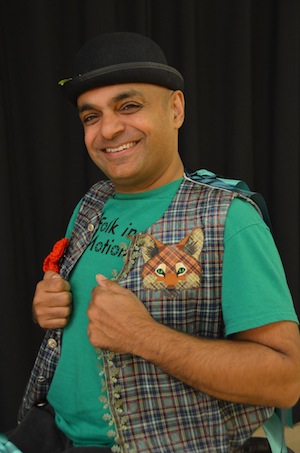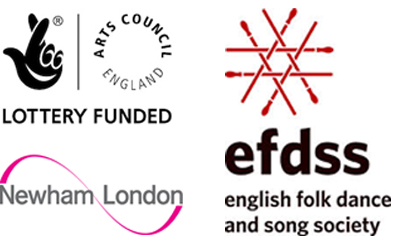Teaching
Tips
Assign everyone a coloured ribbon before you start the warm-up (regular team members will keep the same colour each time). Attach the ribbons on the right-hand side of the wheelchair or somewhere else on the right where it can clearly be seen. Dancers find it much easier understand ‘turning towards the ribbon’ than ‘turning right’. Dancers with limited vision may find it easier to tie their ribbon around their knee or somewhere else where they can touch it. Before you start dancing, remind dancers that they should use the introduction to ensure their chairs are switched on / they have their hand on their joystick / they have their hands on their push rims / the pushers have their hands on the push handles, ready to move. Encourage dancers to think about spacing. Is there enough space between the dancers? Are the gaps between each dancer or pair the same size? Are the dancers too spread out for the time available to move in? What pattern is being made? Most dances involve repetition and it can be reassuring for dancers to understand this as they are learning. The whole dance may be repeated several times (for example Circassian Circle and Blaydon Races), or the dance may be in several parts where some of the movements are the same in each part (for example Gathering Peascods and Hyde Park). In order to return to their place after performing a move, dancers should aim to travel past the space they are aiming for to give them room to turn. Otherwise they will need to reverse backwards once they are in position. When partners dance separately, dark colours always go first, and it can be helpful for dancers to remember this. In some dances where the same movements are repeated in each part, such as Gathering Peascods, the dark colours will go first in Part 1, second in Part 2 and first again in Part 3. When dancers are returning to their places after performing a move, they should turn the same way they are already moving to finish. So for example, if a pair comes together to pivot right shoulder to right shoulder, the dancers should keep turning right to face their partner or front again when they return to their place. Most powered wheelchair users will experience a delay between moving forwards and backwards. Use this pause for the acknowledgements, either stopping on the last beat moving forwards or on the first beat moving back. If you are teaching a circle dance or a dance for 4 pairs, remind dancers they must leave enough space for all dancers to move forwards — the shape should shrink and expand again, rather than a few dancers clashing footplates while the rest can’t get close. Dancers may not always be able to attend because of wheelchair breakdowns, lack of transport or support and illness. Many dances can be danced by as few as four dancers, but for a smaller group, use the time to practice individual moves including spins, pivots, and promenading as a pair. If you are practicing for a performance, regular short rehearsals will be much more successful than longer intensive ones. A dancer’s memory will deteriorate with fatigue, as well as it affecting their performance and making new learning impossible. Learning and making memories is much easier when dancers are fresh, while breaks allow learning to continue to take place unconsciously and long-term memories to develop.
Photo:
Hugh Hill
|

 Remember
that new dancers may be in a space that is large
enough for them to move freely for the first time — even specialist
centres often lack their own hall. New dancers may have limited wheelchair
skills, and/or be frightened of getting close to other dancers because
of a perception that they pose a hazard to other people.
Remember
that new dancers may be in a space that is large
enough for them to move freely for the first time — even specialist
centres often lack their own hall. New dancers may have limited wheelchair
skills, and/or be frightened of getting close to other dancers because
of a perception that they pose a hazard to other people.
